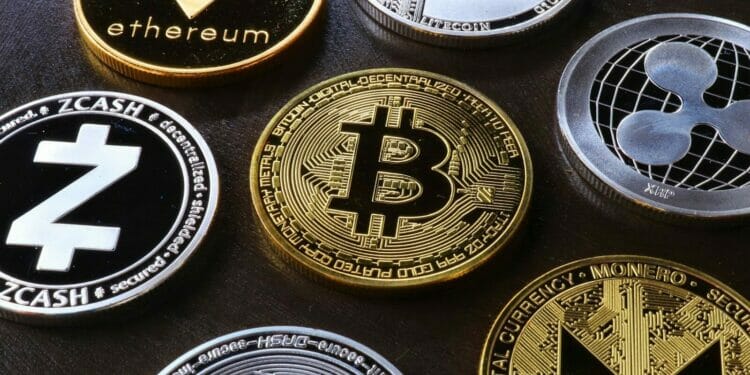Even if you don’t know much about blockchain technology, crypto investments, or the cryptocurrency market as a whole, you’re probably aware that one of the chief characteristics of digital currencies is volatility. Ever since digital assets entered the financial realm and stepped into the spotlight as a means of exchange and, most commonly, an investment instrument, they’ve been both commended and criticized for their extreme price fluctuations.
Obviously, the price swings of the biggest players in the market, like Bitcoin or Ethereum, tend to receive more attention since the evolution of these coins can influence the course of the entire market. The BTC price USD can change from one day to another, taking traders and investors by surprise and leading to major profits or, on the contrary, major losses. But well-established digital currencies have larger market caps, so they typically have lower volatility than smaller coins which are much more susceptible to wild price swings.
Regardless of how much a coin’s price moves across the charts, volatility is the common denominator that unites all cryptos. So, if you’re planning to trade or invest in digital currencies anytime soon, or if you’re already engaged in these practices, it’s important to understand where this volatility comes from and what it implies.
Growing Pains
Unlike traditional assets such as stocks, bonds, or cash that people have been using for ages, digital currencies haven’t been around for long enough to establish themselves as trustworthy and widely accepted financial instruments. Despite the massive untapped potential they hold and their disruptive nature, or precisely because of this, cryptocurrencies still have a long way to go until they can enter the mainstream and reach the same level of trust and reliability as fiat money, gold, and other conventional assets.
Like any new concept that’s been recently introduced to the public, it’s going to take time for cryptocurrencies to prove their worth and reach maturity. Progress implies growing pains, and since cryptos are currently in the early stages of price discovery, it’s normal for their values to rise or drop unexpectedly.
Lack of Regulations
The cryptocurrency market has earned a reputation for being the Wild West of digital finance – a space that’s not controlled by a single entity and where traditional institutions like banks and other third parties have no involvement whatsoever. Decentralization is touted as crypto’s biggest strength, making crypto a self-governing mechanism that relies on a peer-to-peer architecture and gives full control to its users.

In theory, circumventing government controls is what makes digital currencies so incredibly appealing, as it ensures anonymity and broadens inclusion. However, in the absence of a regulatory framework, traders and investors are exposed to the risk of scams and fraud. Without legal provisions that can protect consumers against these threats, the cryptocurrency environment remains largely unstable, and that has a direct impact on crypto prices.
Market Sentiment
In a newly emerging industry dominated by ambiguity, where most investors lack a solid understanding of the technology and the assets they’re adding to their portfolios, market sentiment plays a huge role in the decision-making process. As such, crypto investments are largely speculative in their nature and involve a high degree of risk.
Market sentiment can be influenced by a wide variety of factors, from influential figures endorsing a certain crypto project – as happened when Elon Musk tweeted about Dogecoin – to social media hype or notable events taking place in the crypto sphere. When the market sentiment is bullish, people will flock to invest in crypto, and prices will naturally rise. Conversely, when the market sentiment is bearish, people will adopt a pessimistic attitude and refrain from investing or selling their assets, causing prices to drop. Since market sentiment can change quickly, crypto volatility is a given.
Supply and Demand
Similar to other types of assets, crypto prices are determined by supply and demand dynamics. While government-issued currencies don’t have a supply limit, and governments can pump as much money into circulation as they deem necessary, most crypto projects have a predetermined supply cap. For Bitcoin, the hard cap was established at 21 million BTC in order to ensure scarcity and keep demand high.

However, the problem with digital currencies is that individuals or entities that own large amounts of crypto, otherwise known as whales, have the power to influence market prices through their trading decisions. If they keep assets in their accounts, they increase scarcity and demand for those assets, driving prices up. If they dump large orders, they increase liquidity, and prices will inevitably drop.
Crypto Volatility Between Pros and Cons
While some regard crypto volatility as an advantage, others see it as a drawback. This difference of opinion is to be expected since crypto volatility acts as a double-edged sword. The simple truth is volatility can be both good and bad for traders and investors.
On the positive side, price swings create the potential for high returns. Investors wouldn’t be able to make a profit if prices would never change. From this perspective, increased volatility is desirable as it can lead to increased earnings, and that’s exactly why so many people are drawn to crypto trading. Volatility is a true blessing for those who engage in short-term trades and try to predict the movement of the market so they can make a short-term profit.
On the other hand, volatility can have disastrous consequences as it increases the risk of losses for traders and investors. While timing the market may seem like a very tempting investment strategy, the wide variety of factors influencing market movements makes it nearly impossible to make accurate price predictions. Therefore, investors run the risk of losing all their funds in one fell swoop.
Like it or not, crypto assets are and will most likely continue to be highly volatile in the foreseeable future. But as the industry develops and matures, chances are volatility will diminish and reach more acceptable levels in time.









